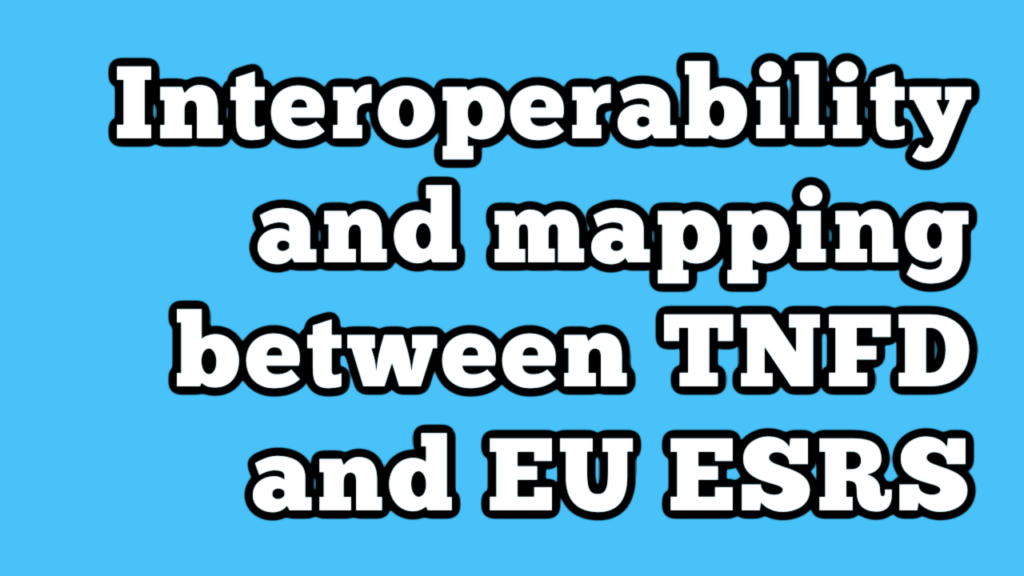Interoperability and mapping between TNFD and EU ESRS

Here’s a note from David Carlin:
Some great work from EFRAG and TNFD to help support and advance interoperability regarding disclosures in this Part 1 and Part 2. This mapping goes into each of the relevant ESRS and TNFD recommendations to explore similarities and differences. Key areas of correspondence:
– Concepts and definitions: Both the TNFD and ESRS recommend the need to disclose on nature-related impacts, risks and opportunities, as well as dependencies from nature to the extent they generate material risks (DIROs).
– Approach to materiality: The ESRS require disclosures to be based on a double materiality principle and the TNFD enables a double materiality approach to be used.
– The LEAP approach: The TNFD developed the LEAP approach, a suggested guidance for market participants to identify and assess their nature-related issues. The ESRS state that companies may conduct their materiality assessment on the sustainability constituents of pollution, water, biodiversity and ecosystems and circular economy using LEAP.
– Reporting pillars: Both the TNFD recommended disclosures and the ESRS reporting areas are organized around the four disclosure pillars of the TCFD, which have now been incorporated in the ISSB’s IFRS Standards.
– Recommended disclosures and metrics: All 14 of the disclosures recommended by the TNFD are addressed in the ESRS. There is also strong consistency between the TNFD core global disclosure metrics and the related metrics in the ESRS.
